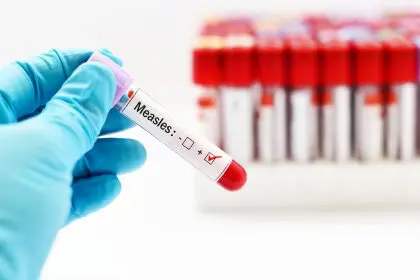While adults have dominated long COVID headlines, a growing body of research is revealing that teenagers are experiencing persistent lung damage that’s fundamentally different from what we see in older patients. These young people, who were supposed to bounce back quickly from COVID infections, are showing up in clinics months later with breathing problems that don’t match any existing medical playbook.
The assumption that children and teenagers would recover completely from COVID has been shattered by mounting evidence that their developing respiratory systems are uniquely vulnerable to long-term damage. What’s particularly alarming is that many of these teenagers had mild or even asymptomatic initial COVID infections, yet they’re now dealing with persistent respiratory symptoms that are interfering with school, sports, and normal teenage activities.
Researchers are discovering that teenage lungs respond differently to COVID damage than adult lungs, creating patterns of injury and healing that medical professionals are still trying to understand. The implications of these findings extend far beyond individual patients to questions about how an entire generation’s lung health might be affected by this pandemic.
Teenage lung development creates unique vulnerabilities
Adolescent lungs are still developing well into the teenage years, with critical growth phases occurring during the exact age range when many students experienced COVID infections. This ongoing development means that COVID damage can interfere with normal lung maturation processes in ways that might not become apparent until years later.
The alveoli, tiny air sacs where oxygen exchange occurs, continue developing and multiplying throughout adolescence. COVID infections can disrupt this crucial developmental process, potentially leading to reduced lung capacity that might not reach full potential even after recovery from the acute infection.
Blood vessel development in teenage lungs is also ongoing, and COVID’s known effects on vascular systems could interfere with the normal expansion of pulmonary circulation that occurs during adolescent growth. This vascular disruption might explain why some teenagers experience exercise intolerance that persists long after other COVID symptoms resolve.
The immune system’s response to COVID in teenagers appears to create inflammatory patterns that can persist for months, potentially interfering with normal lung development and repair processes. This prolonged inflammation might be setting the stage for respiratory problems that could last into adulthood.
Exercise intolerance reveals hidden lung damage
Many teenagers with long COVID report that they can’t participate in sports or physical activities at the same level they could before their infection, even when their lungs sound normal during routine medical examinations. This exercise intolerance often becomes the first clue that something is wrong with their respiratory system.
Advanced imaging studies of teenage athletes with persistent exercise intolerance are revealing subtle changes in lung structure and function that don’t show up on basic chest X-rays or standard pulmonary function tests. These changes suggest that COVID damage in teenagers might be occurring at a microscopic level that requires specialized testing to detect.
The oxygen exchange efficiency in teenage lungs appears to be compromised in ways that only become apparent during physical exertion. While resting oxygen levels might appear normal, the lungs struggle to meet the increased oxygen demands of exercise, leading to breathlessness, fatigue, and reduced athletic performance.
Some teenagers are experiencing what researchers are calling “micro-scarring” in their lungs – tiny areas of damaged tissue that individually are too small to detect but collectively impact overall lung function. This microscopic damage might explain why standard lung tests appear normal while teenagers still experience significant respiratory symptoms.
Sleep-related breathing problems emerge months later
Long COVID in teenagers is creating sleep-related breathing disturbances that weren’t present before their infections. These problems often develop gradually over months following the initial COVID infection, suggesting that lung damage may be progressive rather than static.
Sleep studies of teenagers with long COVID are revealing increased incidents of sleep apnea, restless sleep, and oxygen desaturation during sleep that correlate with their daytime respiratory symptoms. These sleep disturbances can significantly impact academic performance, mood, and overall quality of life.
The inflammation patterns seen in teenage long COVID patients appear to affect the muscles involved in breathing during sleep, leading to more frequent breathing interruptions and less restful sleep. This creates a cycle where poor sleep impairs recovery while respiratory problems make quality sleep more difficult to achieve.
Night-time breathing problems in teenagers with long COVID often go unrecognized because the symptoms can be subtle and easily attributed to typical teenage sleep patterns or stress. However, these sleep-related breathing issues may be indicators of more significant underlying lung damage.
Cognitive symptoms connect to respiratory function
The brain fog and concentration problems commonly reported by teenagers with long COVID appear to be connected to subtle changes in lung function that affect oxygen delivery to the brain. Even mild reductions in oxygen exchange efficiency can impact cognitive performance, particularly in demanding academic environments.
Research is showing correlations between specific types of lung function abnormalities and cognitive symptoms in teenage long COVID patients. Those with reduced oxygen exchange efficiency are more likely to experience memory problems, difficulty concentrating, and mental fatigue during schoolwork.
The connection between respiratory and cognitive symptoms suggests that treating long COVID in teenagers requires addressing both the lung damage and its downstream effects on brain function. Traditional approaches that focus only on respiratory symptoms may miss important aspects of how the condition affects teenage patients.
Some teenagers are experiencing what researchers describe as “cognitive exercise intolerance” where mental tasks become as challenging as physical activities were before their lung function was affected. This suggests that the oxygen delivery problems are impacting both physical and mental performance.
Imaging reveals structural changes invisible to standard tests
High-resolution CT scans and specialized lung imaging techniques are revealing structural abnormalities in teenage lungs that aren’t detectable through routine chest X-rays or basic pulmonary function tests. These imaging findings help explain why teenagers can have normal-appearing standard tests while still experiencing significant respiratory symptoms.
Ground-glass opacities, areas of increased density in the lungs that suggest inflammation or scarring, are appearing in teenage patients months after their initial COVID infections. These changes suggest that the healing process in teenage lungs may be creating permanent structural alterations.
Researchers are finding that the distribution of lung damage in teenagers follows different patterns than in adults, with certain areas of the lungs being more vulnerable to persistent inflammation and scarring. Understanding these patterns could help predict which teenagers are at higher risk for long-term respiratory problems.
Advanced imaging is also revealing changes in the small airways and blood vessels within teenage lungs that could explain the exercise intolerance and breathing difficulties that persist long after acute COVID symptoms resolve. These microscopic changes might represent the earliest stages of chronic lung disease.
Inflammatory markers persist longer than expected
Blood tests and respiratory samples from teenagers with long COVID are showing persistent inflammatory markers that suggest ongoing immune system activation months after the initial infection. This prolonged inflammation appears to be interfering with normal lung healing and development processes.
The inflammatory patterns in teenage long COVID patients are different from those seen in adults, suggesting that the adolescent immune system responds to COVID in unique ways that may predispose to chronic respiratory problems. Understanding these differences is crucial for developing appropriate treatments.
Certain inflammatory compounds that are elevated in teenage long COVID patients are known to interfere with normal lung development and repair processes. The persistence of these inflammatory markers suggests that the lungs may be trapped in a cycle of ongoing damage and incomplete healing.
Research is exploring whether the prolonged inflammation in teenage lungs might be related to the fact that their immune systems are still developing and may be more likely to develop autoimmune responses that continue attacking lung tissue long after the virus has been cleared.
School performance suffers from respiratory limitations
Teachers and school administrators are reporting increasing numbers of students who struggle with activities that were previously easy for them, from climbing stairs between classes to participating in PE or carrying heavy backpacks. These limitations are often subtle but can significantly impact academic performance and social participation.
The fatigue associated with compromised lung function in teenage long COVID patients can make it difficult to maintain attention during long class periods or participate fully in school activities. This fatigue is different from typical teenage tiredness and doesn’t improve with rest.
Some schools are beginning to implement accommodations for students with long COVID respiratory symptoms, including modified PE requirements, elevator access, and breaks between classes. However, many teenagers are struggling without formal recognition of their limitations.
The social impact of respiratory limitations can be particularly significant for teenagers, who may withdraw from activities they previously enjoyed or feel embarrassed about their reduced physical capabilities. This social isolation can compound the physical effects of long COVID.
Treatment approaches require age-specific strategies
Traditional respiratory rehabilitation programs designed for adults may not be appropriate for teenagers with long COVID because their lungs are still developing and their activity levels and social needs are different. Age-specific treatment protocols are being developed to address these unique requirements.
Gradual exercise programs for teenagers with long COVID must balance the need for physical activity to support lung development with the risk of overexertion that could worsen respiratory symptoms. These programs require careful monitoring and individualized progression rates.
Psychological support is a crucial component of treatment for teenage long COVID patients because the impact on their identity, social relationships, and future plans can be devastating. Many teenagers struggle with grief over lost athletic abilities or concerns about long-term health consequences.
Family involvement in treatment is particularly important for teenage patients because parents and siblings may not understand the invisible nature of lung damage or may minimize symptoms that don’t appear on standard medical tests. Education and support for families is essential for successful treatment outcomes.
Long-term implications raise serious concerns
The potential for long COVID lung damage to affect teenagers throughout their adult lives is one of the most concerning aspects of current research findings. Lung damage that occurs during crucial developmental periods may have lifetime consequences that won’t be fully understood for decades.
Researchers are particularly worried about how long COVID lung damage in teenagers might affect their risk of developing chronic obstructive pulmonary disease, asthma, or other respiratory conditions later in life. The teenage years represent a critical window for lung development that, once disrupted, may not fully recover.
The impact on athletic performance and physical fitness could have cascading effects on overall health throughout adulthood. Teenagers who develop exercise intolerance may be more likely to lead sedentary lifestyles that contribute to other health problems over time.
Career and life choices may be affected by persistent respiratory limitations that develop during the teenage years. Students who planned careers in athletics, military service, or other physically demanding fields may need to reconsider their options based on long COVID-related lung damage.
Prevention remains the best protection
Given the potential for long-term consequences, preventing COVID infections in teenagers remains the most important strategy for protecting this vulnerable population from respiratory damage. This includes vaccination, masking in high-risk situations, and maintaining good indoor air quality in schools.
Early recognition and treatment of long COVID symptoms in teenagers may help prevent progression to more severe lung damage. Parents, teachers, and healthcare providers need to be aware of the subtle signs of respiratory compromise that may not be obvious in routine medical examinations.
Research into treatments that can promote healing and prevent progression of lung damage in teenagers with long COVID is urgently needed. The unique developmental aspects of teenage lungs may require entirely new therapeutic approaches that haven’t been developed yet.
The medical community’s understanding of long COVID in teenagers is still evolving, making it crucial for families to advocate for appropriate testing and treatment when respiratory symptoms persist after COVID infections. The long-term health of an entire generation may depend on how seriously we take these emerging findings.


















